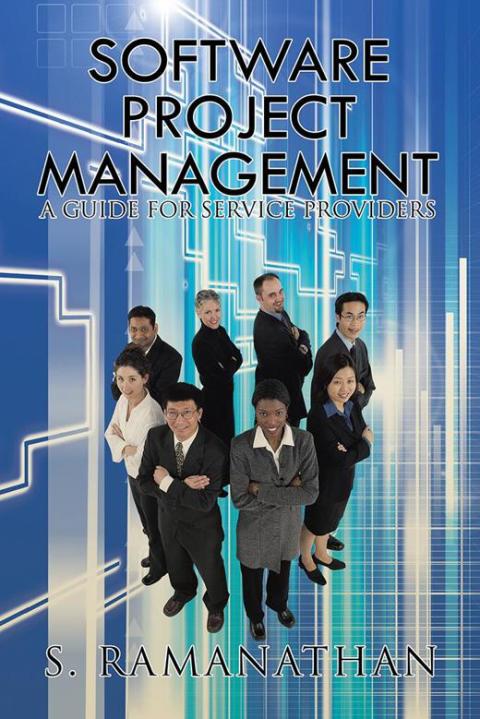Description
Efnisyfirlit
- SOFTWARE PROJECT MANAGEMENT
- Copyright
- Contents
- Preface
- 1 UNDERSTANDING A PROJECT
- 1.1 Lesson objectives
- 1.2 Understanding Software Project Management
- 1.3 What causes a software project to succeed?
- 1.4 Program management
- 1.5 Project management standards
- 1.6 Project management defined
- 2 STAGES OF PROJECT MANAGEMENT
- 2.1 Lesson objectives
- 2.2 Stages of project management
- 2.3 Project management knowledge areas
- 3 PROJECT INITIATION
- 3.1 Lesson objectives
- 3.2 Scope management
- 3.3 Business case
- 3.4 Presentation to management
- 4 PROJECT PLANNING
- 4.1 Lesson Objectives
- 4.2 Project Planning – Coverage
- 4.3 Specifying user requirements
- 4.4 Estimating duration
- 5 TIME MANAGEMENT: SOFTWARE MEASUREMENT
- 5.1 Learning objectives
- 5.2 Why measurement?
- 5.3 Metrics
- 6 SOFTWARE ESTIMATION
- 6.1 Learning objectives
- 6.2 What is estimation?
- 6.3 Challenges in Estimation
- 6.4 Can software be estimated at all?
- 6.5 Approaches to software estimation
- 6.6 Metrics for software estimation
- 6.7 Automation of estimation
- 7 PROJECT SCHEDULING AND TRACKING
- 7.1 Learning objectives
- 7.2 Project scheduling
- 7.3 Assigning staff to activities
- 7.4 Tracking the schedule
- 8 QUALITY MANAGEMENT
- 8.1 Learning objectives
- 8.2 What is quality?
- 8.3 Quality management
- 8.4 Quality control
- 9 RISK MANAGEMENT
- 9.1 Learning objectives
- 9.2 Risk defined
- 9.3 Risk management life-cycle – Phases
- 10 PROJECT COST MANAGEMENT
- 10.1 Lesson objectives
- 10.2 Importance of project cost management
- 10.3 Project cost management processes
- 10.4 Project Plan
- 11 PROJECT EXECUTION
- 11.1 Learning objectives
- 11.2 Launching the project
- 11.3 Stakeholders of a project
- 12 PROJECT STAFFING
- 12.1 Lesson objectives
- 12.2 Project staffing
- 12.3 Project organization structure
- 12.4 Project Management Office (PMO)
- 13 PROCUREMENT MANAGEMENT
- 13.1 Lesson objectives
- 13.2 Growing importance of Outsourcing
- 13.3 Request for Proposal (RFP)
- 13.4 Vendor evaluation
- 13.5 Contract preparation
- 13.6 Vendor Management
- 14 PROFILE OF A PROJECT MANAGER
- 14.1 Lesson objectives
- 14.2 Skills required of a project manager
- 15 MONITORING AND CONTROLLING A PROJECT
- 15.1 Learning objectives
- 15.2 Activities during this phase
- 15.3 Project status reporting
- 15.4 Cost control
- 16 CHANGE CONTROL AND CONFIGURATION MANAGEMENT
- 16.1 Learning objectives
- 16.2 What is configuration management?
- 16.3 What is software configuration?
- 16.4 Challenges in software configuration management
- 16.5 Baseline
- 16.6 Functions of configuration management
- 16.7 Software Configuration Management (SCM) tasks
- 17 RELEASE MANAGEMENT
- 17.1 Learning objectives
- 17.2 What is release management?
- 17.3 Why is release management challenging?
- 17.4 Release identifier
- 17.5 Release package
- 18 EXPECTATION MANAGEMENT
- 18.1 Lesson objectives
- 18.2 What is expectation management?
- 18.3 When is expectation management important?
- 18.4 A technique for expectation management
- 18.5 Prerequisites for managing expectations
- 18.6 Technology – a tool in managing expectation
- 19 CLOSING A PROJECT
- 19.1 Lesson objectives
- 19.2 Steps in project closure
- Annexure I
- Bibliography
- End Notes






Reviews
There are no reviews yet.